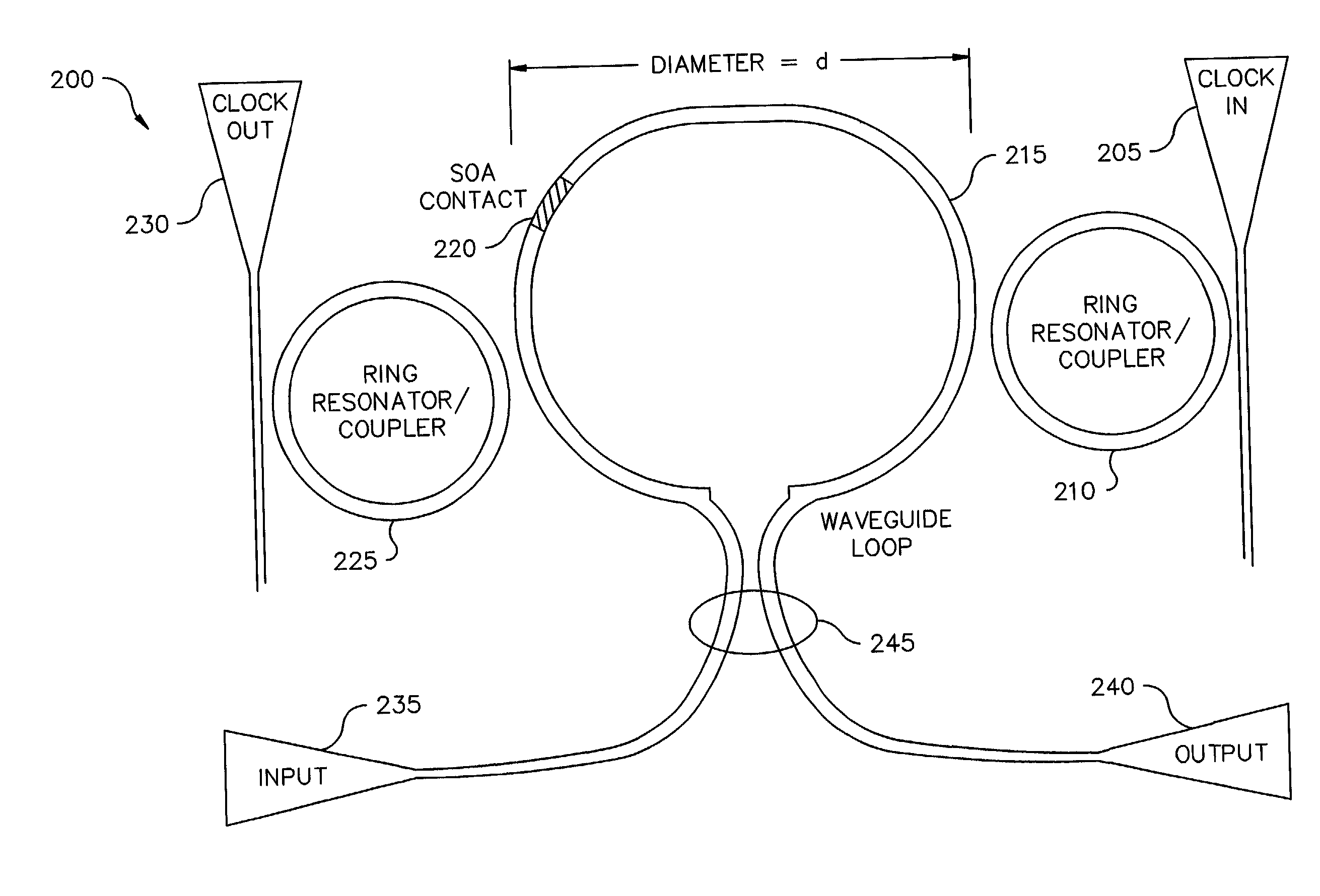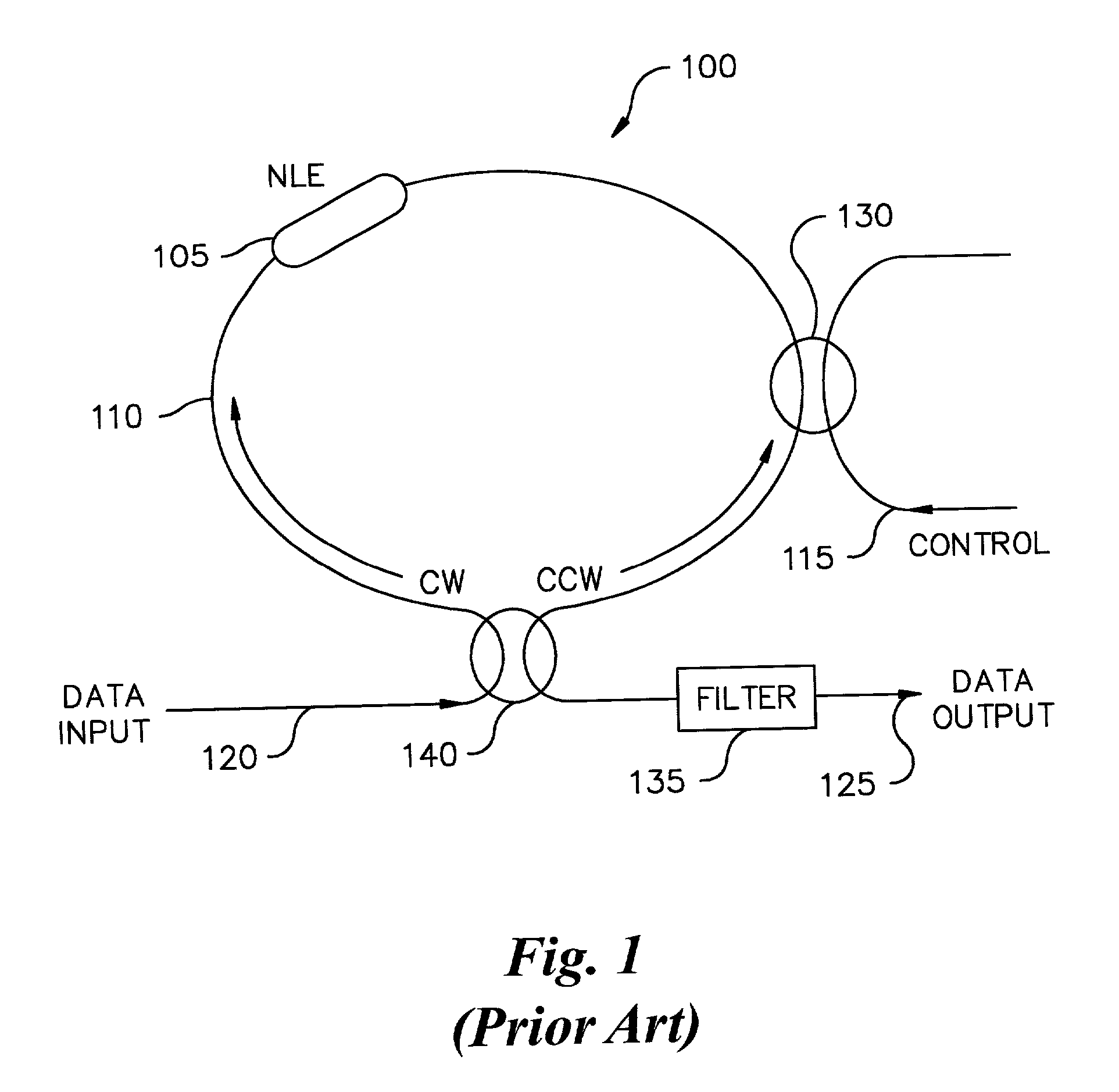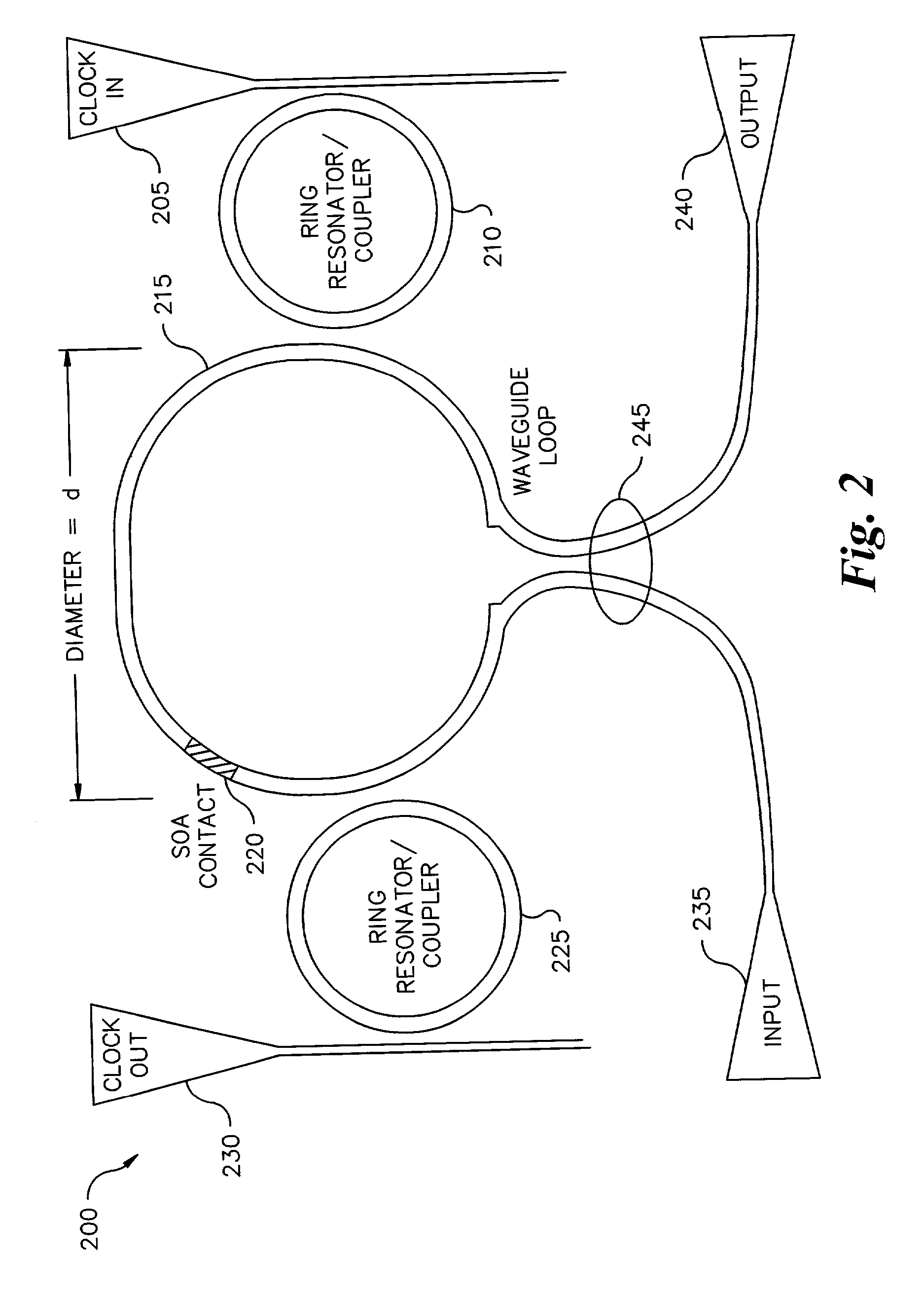Monolithic integrated terahertz optical asymmetric demultiplexer
a multi-multi-plexer and integrated terahertz technology, applied in the field of optical devices, can solve the problems of complex processing techniques at or past the output, unsuitable monolithic fabrication, and inability to provide a smooth transition of signals
- Summary
- Abstract
- Description
- Claims
- Application Information
AI Technical Summary
Problems solved by technology
Method used
Image
Examples
Embodiment Construction
[0024] 1. Overview
[0025] FIG. 2 shows an optical device 200 for routing or demultiplexing data in accordance with the present invention. The optical device 200 comprises a waveguide loop 215 having a nonlinear element 220 inserted in the waveguide loop 215 and a waveguide transition 205 through which a control (clock) signal is injected. The control signal determines the state of the nonlinear element 220. The nonlinear element may be an SOA. A data stream is inputted via waveguide transition 235 and outputted via waveguide transition 240. A ring resonator 210 couples the control signal injected through waveguide transition 205 into the waveguide loop 215. The optical device 200 may also comprise a second ring resonator 225 which couples the control signal out of the waveguide loop 215 after the control signal passes through the optical amplifier 220. The optical device may also comprise a waveguide transition 230 which receives the control signal from the second ring resonator 225....
PUM
| Property | Measurement | Unit |
|---|---|---|
| length | aaaaa | aaaaa |
| length | aaaaa | aaaaa |
| wavelength | aaaaa | aaaaa |
Abstract
Description
Claims
Application Information
 Login to View More
Login to View More - R&D
- Intellectual Property
- Life Sciences
- Materials
- Tech Scout
- Unparalleled Data Quality
- Higher Quality Content
- 60% Fewer Hallucinations
Browse by: Latest US Patents, China's latest patents, Technical Efficacy Thesaurus, Application Domain, Technology Topic, Popular Technical Reports.
© 2025 PatSnap. All rights reserved.Legal|Privacy policy|Modern Slavery Act Transparency Statement|Sitemap|About US| Contact US: help@patsnap.com



